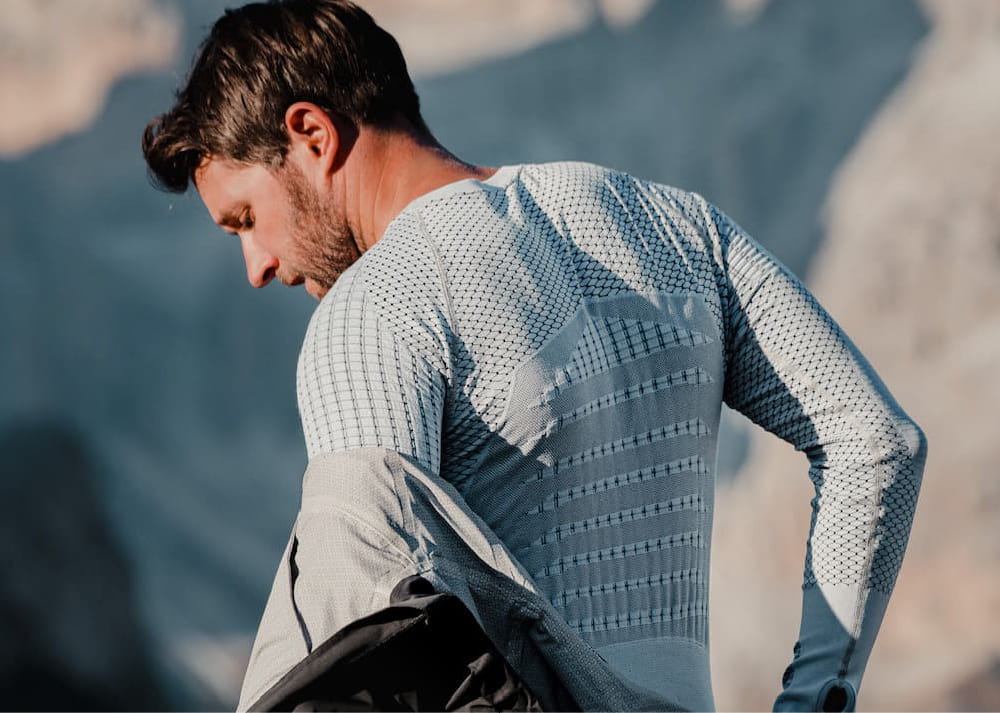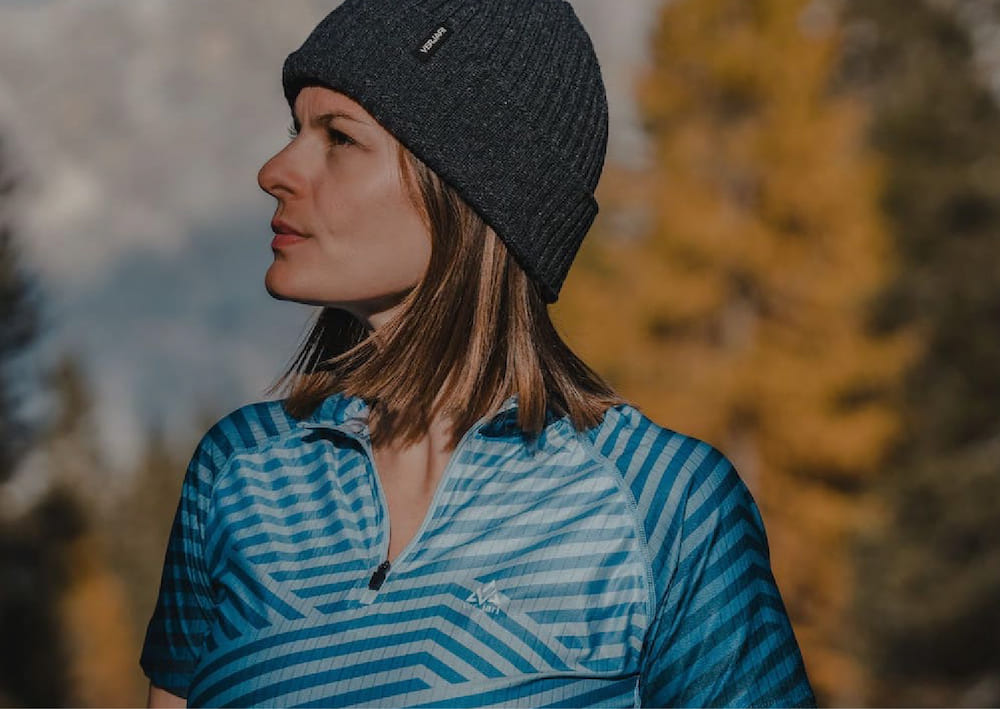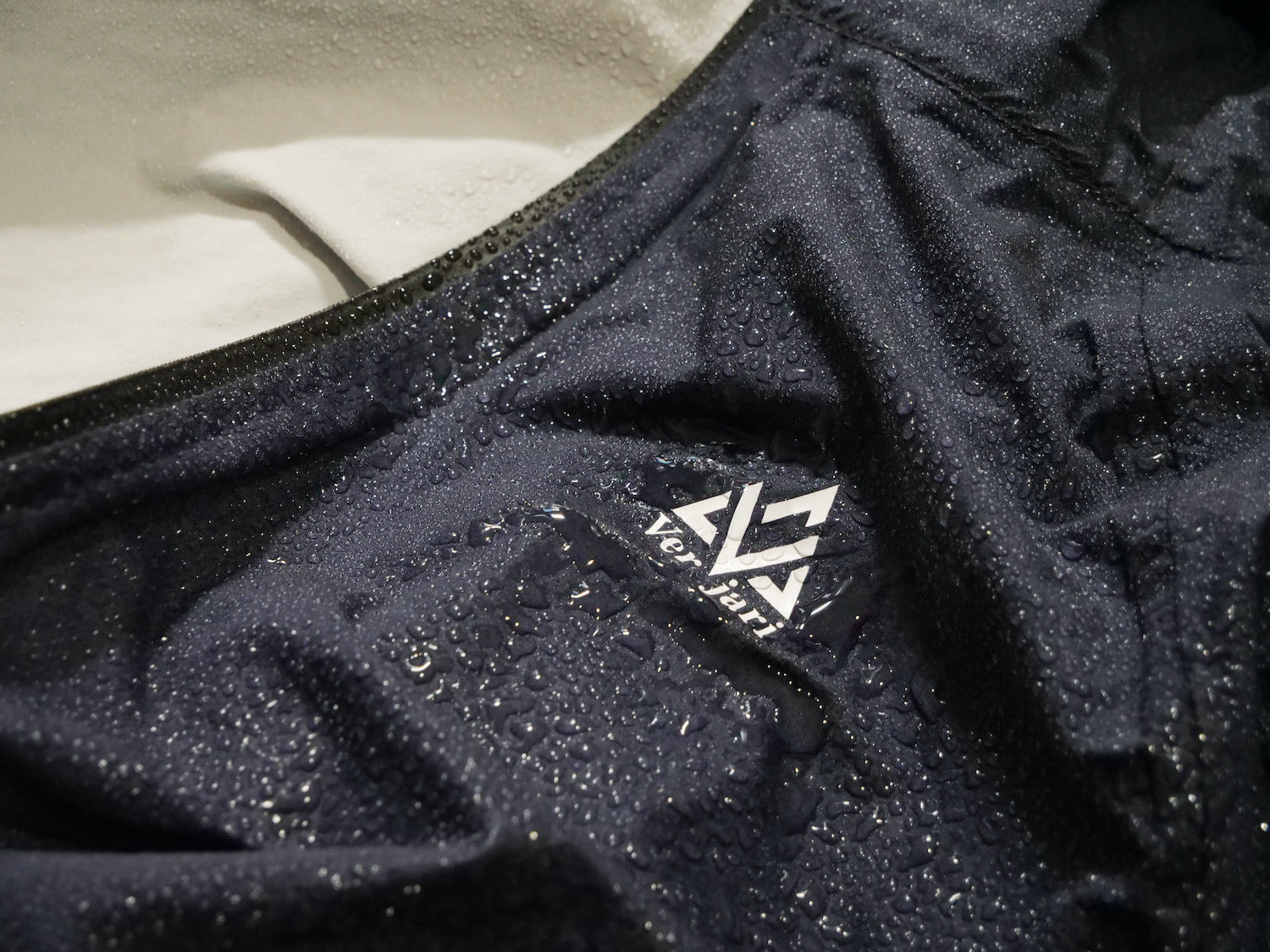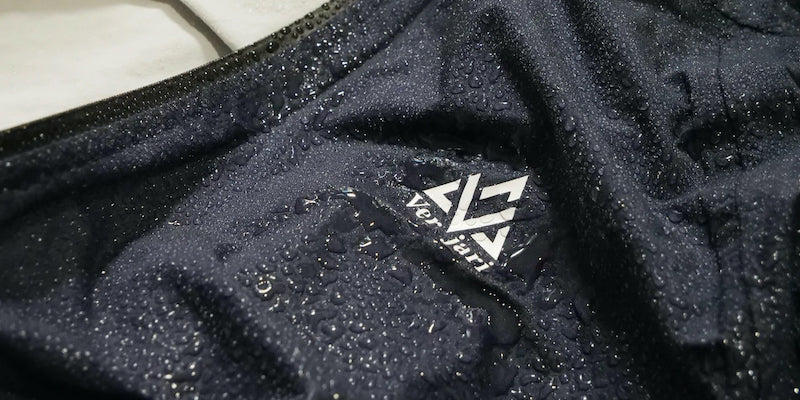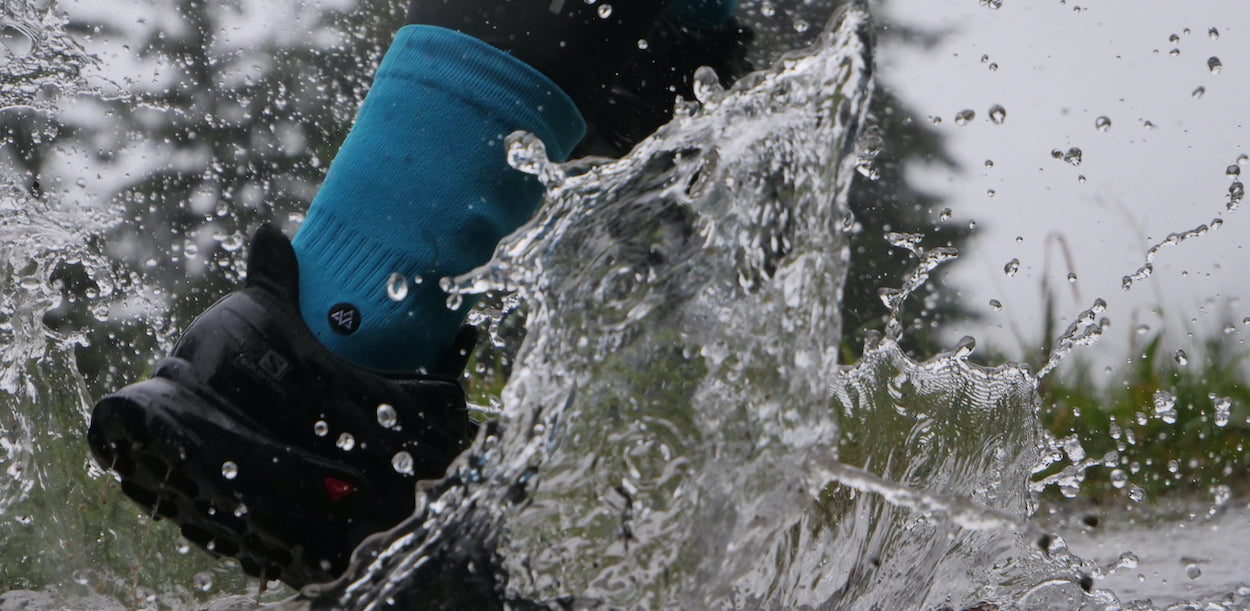Some explanations to fully understand the waterproof concept and choose your garment.
Water repellency
Water repellency is the first degree of water resistance. Concretely, this allows the garment to resist to a very light rain, a drizzle.
On a garment (a fabric), water repellency is obtained by applying a treatment that allows water to run off the fibers. It is generally water repellency that is illustrated on pictures. But in reality, water repellency is not enough for a heavy rain or even a moderate rain.
A fabric can be waterproof without being water repellent. A fabric can be water repellent without being waterproof.
Waterproof
Membranes are essential to get a real resistance to water and a good breathability. Some companies are specialized in the production of waterproof and breathable membranes such as Gore-tex or Sympatex.
Some clothes do not incorporate a membrane and are waterproof (mostly for navigation), but they are not suitable for sports activity because they do not wick away perspiration.
The magic is with the membranes that allow both waterproofing and breathability. Membranes can be designed in different ways, but generally they are referred to as "microporous". They are made with millions of tiny holes, too small to allow water to pass through, but large enough to allow water vapor to go out (perspiration).
Concretely, the membrane is an additional layer which is stuck to the fabric by a process called "lamination". The final fabric thus obtained is called a "laminated" fabric. This fabric can be made of 2 layers, 2.5 layers or 3 layers.
In the case of 2-layer fabrics, the membrane is on one side and the fabric on the other (for the 2.5 layers, we simply apply a very light protection on the surface of the membrane). For 3-layer fabrics, the membrane is sandwiched between 2 layers of fabric (see the waterproof technology used in the Verjari waterproof collection for more details)
On technical garments, total impermeability of the garment is ensured with sealed seams.
Performance
Membranes can have different performances. The performance of a membrane is generally defined according to 2 criteria: Breathability and impermeability.
The MVP (Moisture Vapor Perspiration) breathability indicator is expressed in g / m2 / 24h. It is the ability to wick away perspiration. It is generally considered that a rate of 5000 corresponds to a correct breathability. A rate of 10,000 is good breathability, 15,000 very good and 20,000+ excellent.
The waterproof indicator is the Schmerber. The Schmerber determines the pressure at which the fabric begins to let water go inside.
1 Schmerber = 1 mm water column = 1mbar.
It is generally considered that a garment is waterproof from 1300 Schmerbers (light rain). From 5000 Schmerbers, the garment withstands normal rain, 10.0000 Schmerbers heavy rain, 15,000 very heavy, and 20,000+ resists in all conditions.
To test their clothes, brands can either call independent laboratories or perform tests directly in-house.
Finally, the outside temperature, humidity or pressure have a direct effect on the performance of the membranes. Especially on breathability. For example, in cold temperatures (large difference between body temperature and outside temperature), a membrane will perform much better


